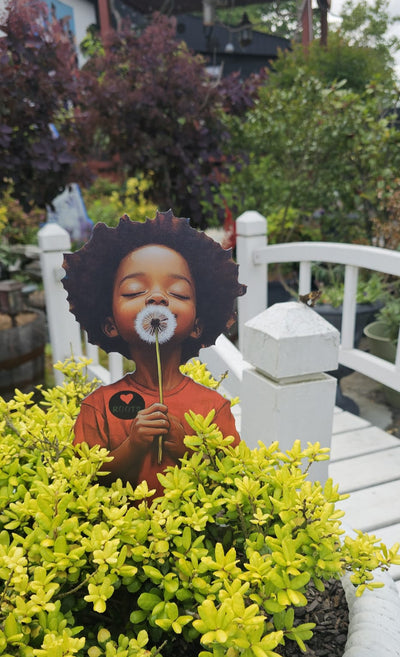Kimberly Camp- Cross River: A Parallel Universe
Kimberly Camp- Cross River: A Parallel Universe
Curated by Judith K. Brodsky and Ferris Olin
Kimberly Camp, artist, arts administrator/entrepreneur and professor, creates dolls. These figures are playful, but not playthings. They emerge from Camp’s imagination inspired by the experiences of peoples of the African Diaspora, historically and in contemporary times. They refer to her own family history and at the same time, are otherworldly including anthropomorphic animals, purple- and green-skinned dolls, and fantasies from outer space, suggesting an existence in a Parallel Universe of multiple diversities. Camp is a storyteller, a guardian of history, and simultaneously a creator of dolls that embody a Utopian world without racism.
The exhibition title refers to the geographic areas in which Camp has lived and worked– Pennsylvania and New Jersey– divided by the Delaware River, (as well as other states). It is also indicative of the position of the artist, identified by Sociologist Patricia Hill Collins in the 1980s, when she coined the phrase “outsider within“ to describe the intersectional position of the Black woman. Camp’s dolls are clothed and bejeweled with materials collected in her travels here and abroad, adding to the sense that they come from beyond the everyday geographic region in which she lives.
To add another complicating aspect to Camp’s Parallel Universe, within the outdated hierarchy of the visual arts, her artistic practice might have been viewed as a craft, not the “high art” of painting, (though Camp is also a painter). The doll, however, has been very much accepted as an art form in the 20th century. Camp’s work is exemplative of the continuum of 20th century artist-made dolls and toys–in the earlier 20th century, Pablo Picasso, Alexander Calder, Paul Klee, and Hans Bellmer; and later in the 20th century, Betye Saar, Faith Ringgold, Miriam Schapiro, Flo Oy Wong, or the many artists who use Barbie dolls as their raw material. Indeed, Ringgold, known for her own doll-like soft sculptures of the 1970s, early championed Camp’s dolls. She not only collected many of them, but also suggested that Essence magazine include Camp and her creations in an article on African American doll makers.

The selection of dolls on view in this exhibition begins with those from the 1980s, when Camp first began to make these figures, to examples of recent creations of the 21st century. The exhibition also includes sound as well as sight. We have recorded Kimberly Camp telling the stories behind the dolls and thus perpetuating the oral tradition of Black women as she describes who and what these figures represent.
– Judith K. Brodsky and Ferris Olin






















